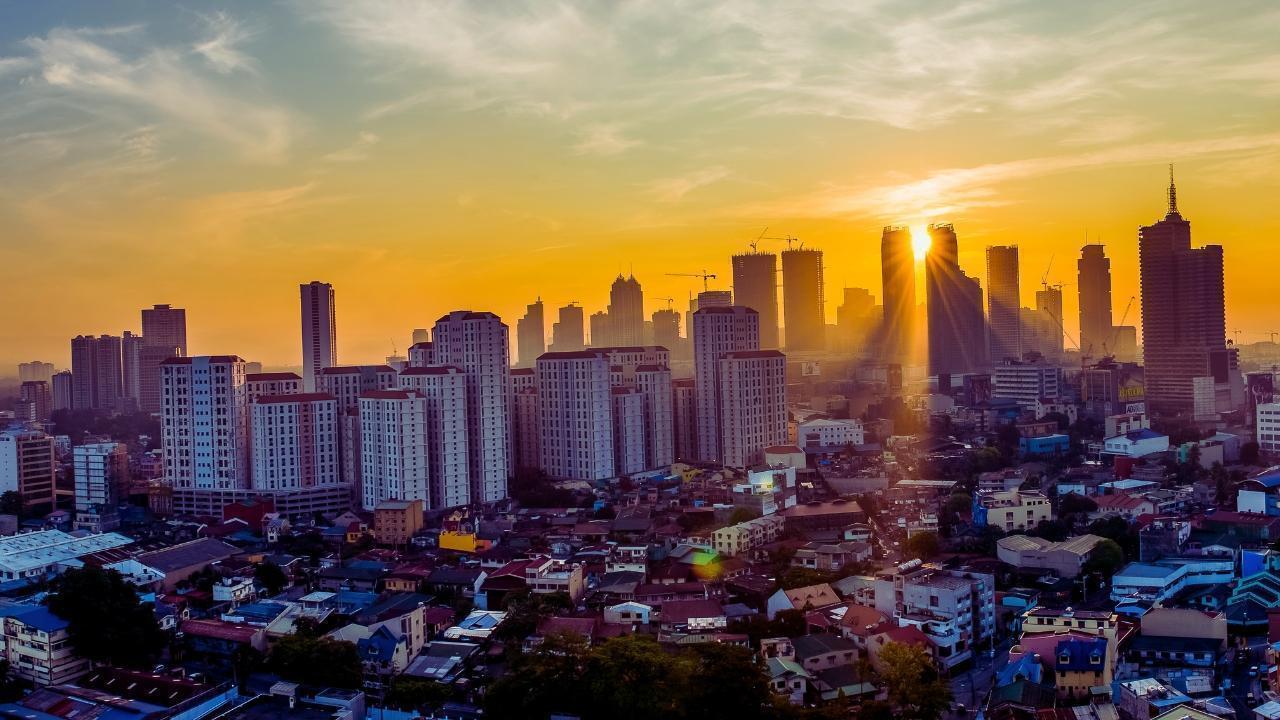
Join 10k+ people to get notified about new posts, news and tips.
Do not worry we don't spam!

Post by : Anis Farhan
In recent years, Asia has emerged as a global leader in building smart cities — urban areas that leverage cutting-edge technology to improve the quality of life for their residents. These cities are integrating digital tools like artificial intelligence, Internet of Things (IoT), and big data to manage resources efficiently, reduce environmental impacts, and deliver better public services. Whether it’s through traffic automation, smart energy grids, or digital governance, smart cities are no longer just futuristic concepts—they are becoming a reality, fundamentally transforming the day-to-day experiences of millions across Asia.
Asia’s rapid urbanization is one of the primary drivers of its smart city revolution. With increasing population density in major urban areas, traditional infrastructure is struggling to cope. Cities like Singapore, Seoul, Tokyo, and Dubai have embraced smart technologies as a solution to rising congestion, pollution, and housing demands. Governments across the continent view smart cities as essential to sustainable development, helping to enhance citizen welfare while maintaining economic growth. Additionally, the strong tech industry presence in Asia, backed by government initiatives and public-private partnerships, is fueling this large-scale transformation.
Singapore is often recognized as one of the most advanced smart cities globally. Through its Smart Nation initiative, the city-state has implemented a host of technological solutions aimed at enhancing urban living. From a fully cashless payment system to AI-driven traffic management and public healthcare digitization, Singapore is setting the gold standard. The Housing Development Board uses data analytics to predict maintenance needs, while smart lampposts gather real-time environmental data. Singapore’s success lies in its holistic approach—technology here enhances efficiency without compromising citizen rights and privacy.
South Korea’s capital, Seoul, is another standout in the smart city landscape. The city’s government has introduced AI-powered public services, including chatbots that assist citizens in administrative tasks. Real-time data from IoT devices optimizes traffic signals and monitors air quality. Free public Wi-Fi across public spaces keeps residents connected at all times. Seoul is also investing in smart safety technologies, using CCTV with AI recognition to improve public security. With continuous efforts to expand digital inclusion, Seoul is making high-tech urban living accessible to all socio-economic groups.
Tokyo exemplifies how a city can balance rich cultural heritage with smart technology. As one of the world’s largest cities, Tokyo uses advanced technology to manage complex urban systems. From bullet trains with automated scheduling to facial recognition ticketing in metro stations, innovation touches every corner of the city. Ahead of the Tokyo Olympics, the city introduced extensive smart mobility systems, AI-based translation services for tourists, and disaster response technology to prepare for emergencies. Tokyo continues to invest in smart energy solutions, particularly in renewable energy integration and smart home systems.
In the Middle East, Dubai has become a symbol of rapid smart city development. The Dubai Smart City Strategy aims to transform all government services into digital platforms while embracing AI in everything from policing to transportation. The Dubai Paperless Strategy has eliminated paper transactions in government departments. Smart parking, smart health, and AI-powered public transport solutions are all part of everyday life. Dubai is also working on futuristic projects like autonomous drone taxis and blockchain-based administrative services, pushing the boundaries of urban innovation.
China has made significant investments in smart city infrastructure, with hundreds of pilot smart cities under development. Cities like Shenzhen, Hangzhou, and Shanghai stand out with their AI-driven governance and smart commerce systems. Hangzhou, for example, uses Alibaba’s City Brain technology to optimize traffic flow and emergency responses, reducing travel time by up to 15%. Facial recognition is widely used for payments and access control, while smart surveillance systems play a major role in city management. However, China’s model often sparks debate about surveillance and privacy, highlighting the balance challenges in smart urban development.
India’s Smart Cities Mission is unique due to its scale and diversity. Launched in 2015, the program targets over 100 cities, focusing on improved urban mobility, smart governance, and digital services. Cities like Pune, Bhopal, and Surat are experimenting with smart traffic control, e-governance apps, and smart waste management systems. While India’s smart cities face challenges such as funding gaps and infrastructure limitations, the mission is helping introduce affordable technology solutions suitable for both urban and semi-urban populations, with an emphasis on sustainability and inclusivity.
Southeast Asian countries like Malaysia, Thailand, and Indonesia are also making strides in smart city initiatives. Kuala Lumpur has developed smart transportation systems, while Bangkok focuses on smart flood management and traffic decongestion using AI systems. Jakarta’s smart city plan involves crowd-sourced civic reporting apps, AI traffic control, and digital ID systems. Regional cooperation via platforms like ASEAN Smart Cities Network (ASCN) aims to share best practices and accelerate regional transformation, bringing smart urban living to diverse socio-economic settings.
Some of the defining features of Asia’s smart cities include:
Smart Mobility: AI-powered public transportation, smart parking systems, and electric vehicle infrastructure.
Sustainable Energy: Renewable energy integration, smart grids, and energy-efficient buildings.
Digital Governance: E-governance platforms, AI chatbots, and paperless administrative systems.
Public Safety: AI-based surveillance, smart emergency response systems, and predictive policing.
Smart Healthcare: Telemedicine, AI diagnosis, and connected health monitoring systems.
Environmental Management: Smart waste management, pollution tracking, and green urban planning.
These elements work together to create safer, cleaner, and more efficient cities.
For residents, smart cities promise a better quality of life. Reduced traffic congestion, lower pollution levels, improved healthcare access, and faster administrative services are just a few benefits. By integrating citizen feedback through apps and open data platforms, smart cities also promote more responsive governance. Citizens gain convenience through digital services, safer environments through advanced surveillance, and healthier lifestyles through smart healthcare initiatives.
Despite the optimism, challenges remain in Asia’s smart city expansion:
Privacy Concerns: Surveillance technologies raise fears of data misuse.
Digital Inequality: Access to smart services can be uneven across income groups.
High Costs: Smart infrastructure requires significant investment and ongoing maintenance.
Technological Dependence: Over-reliance on tech can make cities vulnerable to cyber-attacks.
Cultural Adaptation: Rapid digitalization must be balanced with preserving cultural identity and social harmony.
Addressing these challenges is critical to ensuring that smart cities remain inclusive and sustainable.
Looking ahead, smart cities in Asia are likely to become even more sophisticated. Trends include:
5G Expansion: Faster connectivity to enable seamless digital services.
AI Personal Assistants: Broader integration into public services.
Autonomous Transport: Driverless taxis and public shuttles.
Blockchain Governance: Secure, transparent public administration.
Green Urbanism: Stronger focus on carbon neutrality and eco-friendly urban design.
Cross-Border Cooperation: Greater regional sharing of smart city innovations.
These developments will further embed technology into daily life, making cities more responsive to citizen needs.
Asia’s smart cities are showing how technology can reshape urban life for the better. With investments in digital infrastructure, AI-driven services, and sustainable planning, these cities offer a glimpse into the future of living where convenience, safety, and sustainability go hand in hand. While challenges remain, especially concerning privacy and inclusivity, the smart city revolution holds tremendous promise for making urban living healthier, more efficient, and more connected than ever before.
This article is for informational purposes only. Urban development policies differ by country and city; readers are advised to consult local urban planning authorities for specific updates.










Zohran Mamdani Clinches NYC Mayoral Seat as Victory Speech Blends Politics and Bollywood
Zohran Mamdani won New York City's mayoral race, becoming the city's first Muslim and South Asian ma

India Wins First Women’s World Cup 2025 Title
India lifts its maiden Women’s World Cup 2025 title! Harmanpreet Kaur’s team stuns South Africa in a

Manuel Frederick, 1972 Olympic Bronze Goalkeeper, Dies at 78
Manuel Frederick, a member of India’s 1972 Olympic bronze hockey team, has died in Bengaluru at 78 a

Muhammad Hamza Raja Wins IFBB Pro Card Puts Pakistan & UAE on Global Stage
Pakistani bodybuilder Muhammad Hamza Raja earns IFBB Pro Card in Czech Republic, showcasing Dubai’s

Shreyas Iyer’s Recovery Underway After Spleen Laceration in Sydney ODI
Shreyas Iyer is recovering after a spleen laceration sustained while taking a catch in the Sydney OD

Qatar Ready to Host FIFA U-17 World Cup 2025 in Aspire
Qatar confirms full readiness to host the FIFA U-17 World Cup 2025 from November 3–27, with world-cl